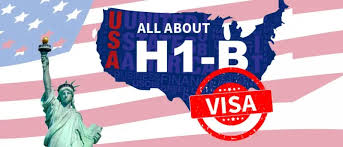Immigration Law at Canada
Canada's immigration system is governed by the Immigration and Refugee Protection Act (IRPA), which outlines the legal framework for the admission, treatment, and removal of foreign nationals. The system is designed to balance Canada's humanitarian commitments with the need to protect public health, safety, and security. (Immigration and Refugee Protection Act)
🇨🇦 Objectives of the Immigration and Refugee Protection Act
The IRPA aims to:
Enhance Canada's social, cultural, and economic fabric by facilitating immigration.
Support the development of minority official language communities.
Promote the successful integration of permanent residents.
Reunite families.
Maintain the integrity of the immigration system.
Protect public health and safety.
Uphold Canada's international obligations concerning refugees. (Immigration and Refugee Protection Act)
🧳 Temporary Residents
Canada offers several pathways for temporary residents, including:
Tourists: Visitors from visa-exempt countries can stay for up to six months.
Students: International students must obtain a study permit to study in Canada.
Workers: Temporary work permits are issued based on job offers and labor market assessments. (Canada further tightens rules on temporary workers, students)
Recent policy changes have introduced caps and restrictions to manage the number of temporary residents, aiming to address housing pressures and other public concerns. (Canada is capping foreign student visas to ease housing pressures as the cost of living soars)
🏠 Permanent Residents
Individuals can apply for permanent residency through various programs: (Provincial Nomination Program)
Express Entry: A points-based system for skilled workers.
Provincial Nominee Programs (PNPs): Allow provinces to nominate individuals based on local labor market needs.
Family Sponsorship: Enables Canadian citizens and permanent residents to sponsor relatives.
Humanitarian and Compassionate Grounds: For individuals facing exceptional circumstances. (Provincial Nomination Program)
The Provincial Nominee Program (PNP) allows provinces to nominate individuals for permanent residence based on local labor market needs. Each province has its own streams targeting specific groups, such as skilled workers, students, or entrepreneurs. (Provincial Nomination Program)
🛡️ Refugee Protection
Canada's refugee protection system is designed to offer safe haven to those fleeing persecution. Individuals can claim refugee status upon arrival or from within Canada. Claims are assessed by the Immigration and Refugee Board (IRB), which determines eligibility based on international obligations and Canadian law. The IRPA outlines procedures for refugee claims, appeals, and removals.
📜 Citizenship
To become a Canadian citizen, individuals must:
Be permanent residents.
Have lived in Canada for at least 3 out of the last 5 years.
Demonstrate adequate knowledge of English or French.
Pass a citizenship test.
Not have a criminal history that affects eligibility.
Recent amendments have restored the right for citizens born abroad to pass citizenship to their children born outside Canada, addressing previous limitations. (Canada to restore right of citizens born abroad to pass citizenship to children also born outside country)
⚖️ Enforcement and Compliance
The Canada Border Services Agency (CBSA) and Immigration, Refugees and Citizenship Canada (IRCC) are responsible for enforcing immigration laws, including:
Monitoring compliance with visa conditions.
Investigating and addressing immigration violations.
Detaining and removing individuals who do not comply with immigration laws.
🧑⚖️ Regulatory Oversight
The College of Immigration and Citizenship Consultants (CICC) regulates immigration and citizenship consultants in Canada. Established in 2021, the CICC ensures that consultants adhere to professional standards and ethical practices. (College of Immigration and Citizenship Consultants)





0 comments